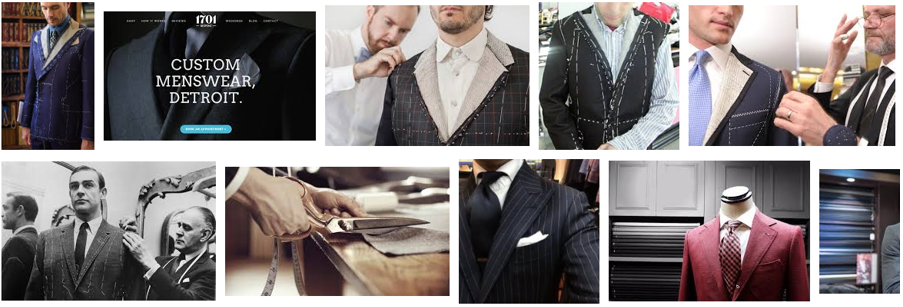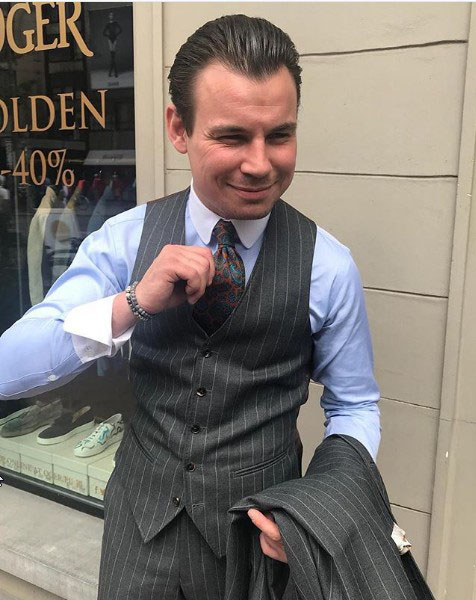Tailor - Master Tailor
A tailor, also known as a coupeur, is traditionally someone who manufactures made to measure clothing. Certainly in modern times, however, someone may be referred to who makes all kinds of made to order garments.
The craft of tailor is thousands of years old. It was already practiced at the time of the ancient Greeks and Romans and in all probability well before that. A "master tailor" has one (or more) apprentice (s) under his care, to whom he learns the tricks of the trade.
Traditional tailors were sitting on a table in the so-called cross-legged pose, in order to have a clean and flat surface around them and not have to sit on the floor.
History
A tailor is a person who makes, repairs, or alters clothing professionally, especially made to measure suits and men's clothing.
Although the term dates to the thirteenth century, tailor took on its modern sense in the late eighteenth century, and now refers to makers of made to order men's and women's suits, coats, trousers, and similar garments, usually of wool, linen, or silk.
The term refers to a set of specific hand and machine sewing and pressing techniques that are unique to the construction of traditional jackets. Retailers of tailored suits often take their services internationally, traveling to various cities, allowing the client to be measured locally.
Traditional tailoring is called "bespoke tailoring" in the United Kingdom, where the heart of the trade is London's Savile Row tailoring, and "custom tailoring" in the United States and Hong Kong. This is unlike made to measure which uses pre-existing patterns. A bespoke garment or suit is completely original and unique to each customer.
Famous fictional tailors include the tailor in The Tailor of Gloucester, The Emperor's New Clothes and The Valiant Little Tailor. A more recent example is John le Carré's The Tailor of Panama.


Types of tailoring


As the tailoring profession has evolved, so too have the methods of tailoring. There are a number of distinctive business models which modern tailors may practice. While some may practice many, there are others who will practice only one or two.
-
Local tailoring
Local tailoring is as the name implies. Typically the tailor is met locally and the garment produced locally. This method enables the tailor to take professional measurements, assess posture and body shape to make unique modifications to the garment. Local tailors will typically have a showroom or shopfront allowing clients to choose fabrics from samples or return the garment easily should it require further modification. This is the most traditional form of tailoring. Hong Kong Tailors and London are the most famous for high quality bespoke tailoring, in average it takes about 2 to 3 fittings and about 50 to 70 working hours to handmake one suit. -
Distance tailoring
Distance tailoring involves ordering a garment from an out-of-town tailor enabling cheaper labour to be used. In practice this can now be done on a global scale via e-commerce websites. Unlike local tailoring, customers must take their own measurements, fabric selection must be made from a photo and if further alterations are required the garment must be shipped. Today, the most common platform for distance tailoring is via online tailors.
Online tailors sometimes offer to pay for needed alterations at a local tailor. Another new option is the concept where a free test suit is made to the provided measurements and shipped to the customer first. The test suit can be tried on and worn to see where any adjustments are wanted. The final suit is then tailored to the new specifications provided by the test suit fitting. -
Traveling tailor
Unlike tailors who do distance tailoring, travelling tailors provide a more personal service to their customers and give the customers an opportunity to see the fabric samples and meet the tailor in person. Traveling tailors travel between cities and station in a local luxury hotel for a short period of time to meet and provide the same tailoring services they would provide in their local store. In the hotel, the customer will be able to select the fabric from samples and the tailor will take the measurements himself. The order then will be shipped to the customer within 3–4 weeks time. Unlike local tailoring, if further alterations are required the garment must be shipped. Today, most traveling tailors are from Hong Kong, traveling to the United States, the United Kingdom, France, Australia and Japan.









